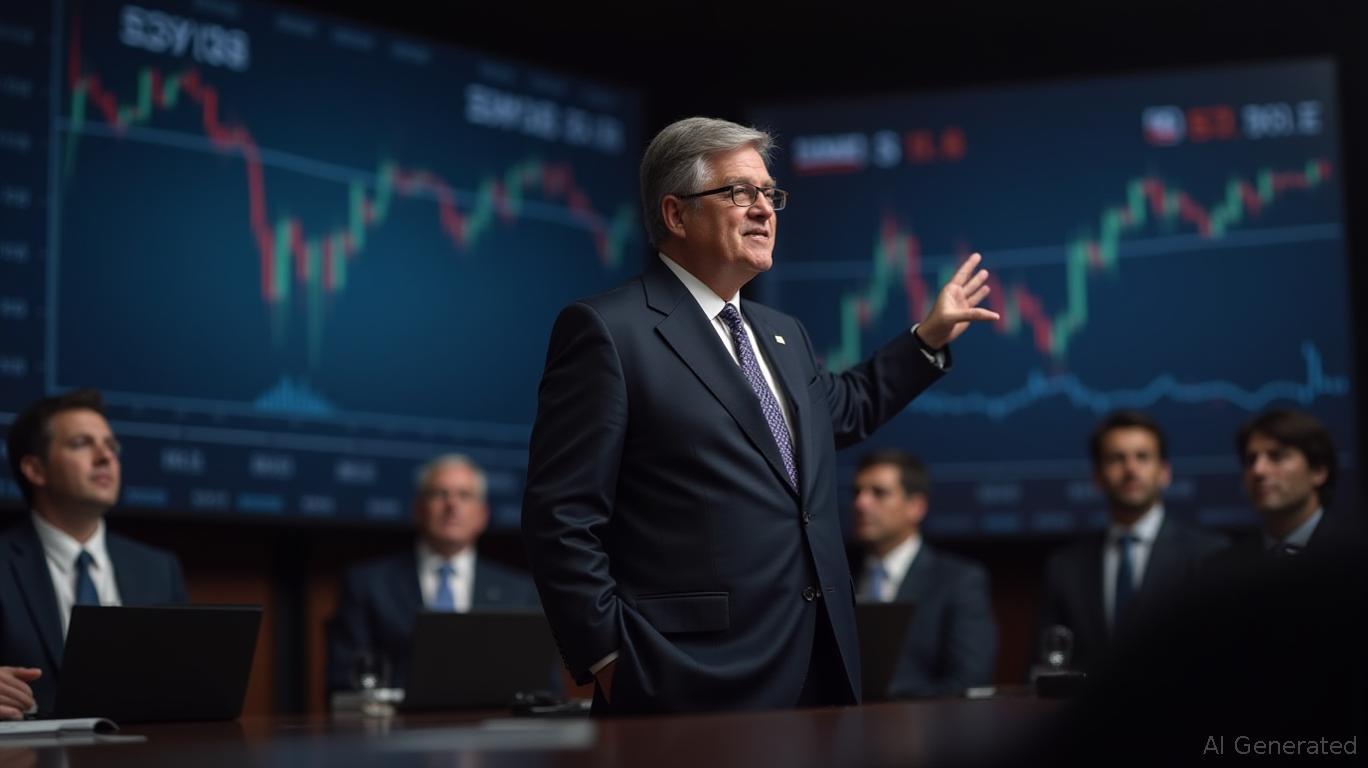Solana News Today: Crypto ETFs Connect Conventional Finance and Digital Assets with $65 Million Launch
- New crypto ETFs tracking Litecoin, Hedera, and Solana generated $65M in day-one trading, signaling institutional adoption growth. - Bitwise's first SEC-approved Solana staking ETF (BSOL) offers 7% yield via Helius, with zero fees until $1B AUM. - Grayscale's Crypto 5 ETF (GDLC) bundles Bitcoin, Ethereum, Solana, XRP, and Cardano, reflecting diversified market cap exposure. - Institutional interest in altcoins like Litecoin and Hedera highlights expanding crypto investment beyond top two cryptocurrencies.
New cryptocurrency ETFs tracking
The Bitwise Solana Staking ETF ($BSOL), the inaugural ETF of its type, opened for trading on October 28 and saw strong investor interest. This fund provides direct access to Solana (SOL) and stakes the tokens on-chain through Helius Labs, aiming for an average annual yield of 7%. To attract institutional investors, the ETF is waiving fees for the first three months or until it reaches $1 billion in assets under management (AUM). Its predecessor, the REX-Osprey Staking Solana ETF (SSK), already surpassed $400 million in AUM, highlighting robust demand for yield-generating crypto investments, as mentioned in the

Grayscale introduced the
Institutional interest has also grown for Litecoin and Hedera. The Canary Litecoin and HBAR ETFs, which are launching alongside the Bitwise Solana ETF, received SEC approval after delays caused by the government shutdown. Gregg Bell from the Hedera Foundation described the approval as a "new chapter" for regulated crypto investment, emphasizing Hedera’s enterprise-level infrastructure and oversight by Fortune 500 companies such as IBM and Boeing, as reported when the
Market trends show these products are attracting broad interest. While
This movement reflects larger trends in the industry. The
Nonetheless, some challenges persist. Grayscale and 21Shares have pointed out risks such as price swings and the possibility of significant outflows. Despite these concerns, the momentum in the sector indicates that crypto ETFs are becoming an important link between traditional finance and digital assets. As institutional investors look for regulated, liquid crypto exposure, the $65 million launch of these new funds could be a sign of even greater capital inflows into crypto markets in 2025.
Disclaimer: The content of this article solely reflects the author's opinion and does not represent the platform in any capacity. This article is not intended to serve as a reference for making investment decisions.
You may also like
Bitcoin Updates: Fed’s Softer Stance Supports Both Economic Expansion and Inflation—Positive Momentum for Crypto
- The U.S. Federal Reserve cut rates by 25 bps to 3.75%-4.00% on October 29, 2025, ending quantitative tightening by December 1, easing liquidity constraints. - Crypto markets initially dipped post-announcement but gained analyst support as lower rates and weaker dollar historically boost Bitcoin and Ethereum as hedges. - Institutional crypto demand remained strong with Coinbase reporting 2,772 BTC inflows and Bitcoin ETFs seeing net inflows, while Tether's USDT supply surpassed $183 billion. - The Fed's "

Bitcoin News Update: Bitcoin Rally Drives $2.8B in Gains While Strategy's Shares Drop 15% Year-to-Date
- Strategy Inc. (MSTR) reported $2.8B Q3 2025 net income from Bitcoin's $70.6B portfolio (640,808 BTC) amid $20B unrealized gains. - New fair value accounting rules enabled profit recognition without selling Bitcoin, reversing $340M 2024 losses and boosting operating income to $3.9B. - CEO Phong Le targets $34B operating income if Bitcoin hits $150K, while $20B 2025 capital raises expanded holdings by 40,000 BTC. - Despite 51.74% BTC gains, shares fell 15.15% YTD due to dilution concerns, contrasting with

MEV's Tendency to Centralize Poses a Challenge to the Fundamental Principles of DeFi
- MEV (Maximal Extractable Value) destabilizes DeFi markets by enabling miners/validators to reorder transactions for profit, imposing a "hidden tax" on retail traders through front-running and sandwich attacks. - Aditya Palepu highlights systemic risks: 80% of MEV costs fall on retail users, while institutions avoid DeFi to mitigate front-running risks, undermining market liquidity and stability. - Trusted Execution Environments (TEEs) encrypt transactions pre-execution to block front-running, but vulnera

MEV Takes Advantage of DeFi Transparency, Triggering Concerns Over Fairness
- MEV exploits blockchain transparency to reorder transactions, creating a "hidden tax" that deters institutional DeFi adoption and harms retail users. - Sandwich attacks and front-running cost retail investors up to 80% of MEV-driven losses, with 24% of Ethereum blocks affected annually. - Trusted execution environments (TEEs) emerge as a solution by privatizing transaction data, potentially unlocking $trillions in institutional capital. - Experts warn MEV centralizes power and inflates costs, requiring g
